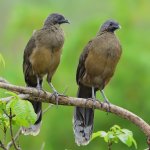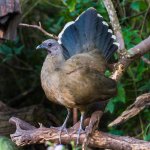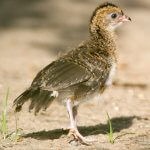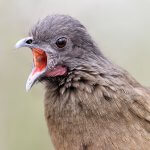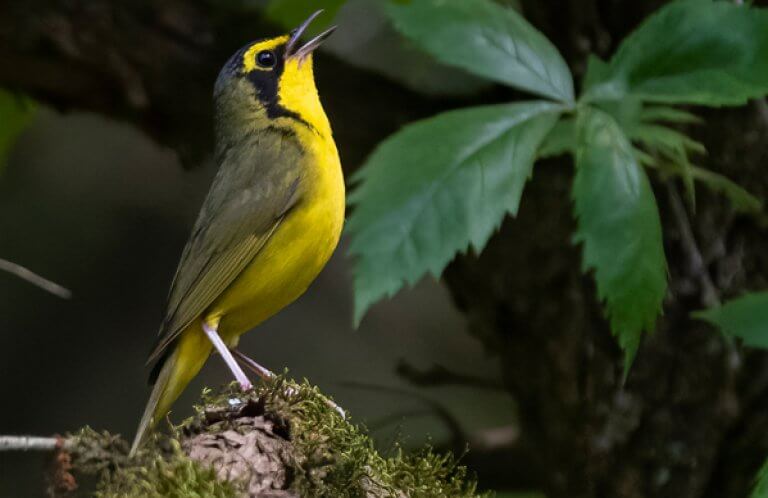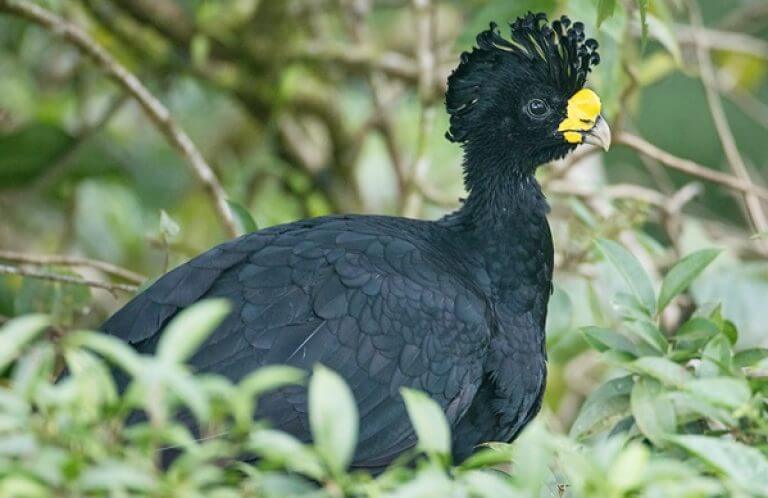About the Plain Chachalaca
The Plain Chachalaca is a member of the Cracidae family, which includes large turkey or chicken-like tropical birds such as the Blue-billed Curassow, Great Curassow, and Baudo Guan. Like many of its relatives, the Plain Chachalaca is highly social, living in flocks of up to 15 birds. However, this wary bird can be hard to spot amid its preferred habitat of thick, thorny scrub. It's reluctant to fly, escaping threats by running or climbing through the underbrush.
When spotted, this chicken-like bird epitomizes the name “plain,” with drab, olive-brown body plumage, grayish head and neck, and buffy belly. It has a long, dark, white-tipped tail with a green sheen. Its only trace of bright color is a small area of bare red skin on its throat, most noticeable on a displaying male.
Despite its unassuming looks and retiring habits, the Plain Chachalaca still manages to make itself known wherever it occurs.
Chachalaca Cacophony
Although it may be hard to see, the Plain Chachalaca is easy to hear. In early morning or evening, pairs sound off with loud, raucous "cha-cha-LAW-ka" calls that give the species its name. Whole groups often join in the chorus, singing in rounds and making an ear-splitting racket. Male chachalaca calls are slightly lower-pitched than females; calling peaks during its breeding season, although this noisy bird can be heard year-round.
In addition to its onomatopoeic squawk, the Plain Chachalaca communicates in low, purring contact calls, squawks, and cackles.
Songs and Sounds
Listen to a group of Plain Chachalacas sounding off here:
Contact calls:
Breeding and Feeding
Nest Recycler
The Plain Chachalaca forms monogamous pair bonds that last at least through the breeding season. Courtship displays include mutual preening and courtship feeding, where one member of a pair feeds a berry or fruit to its mate.

Interestingly, the Plain Chachalaca often nests in the refurbished nests of smaller birds, including the Yellow-billed Cuckoo. Both members of a pair work to refurbish an existing nest or build a flimsy-looking stick nest that they line with moss and leaves. The chachalaca pair conceals their nest amid thick vegetation on a low branch from three to 30 feet above the ground. The female lays a clutch of 2-4 eggs, which she incubates for close to a month. The precocial chicks leave the nest within a day of hatching and follow their mother. The young can grasp and climb around on branches, and they are able to fly short distances within their first week. Both parents continue to care for their young after fledging.
Flexible Feeder
The Plain Chachalaca feeds on a wide variety of fruits and plant material, insects and invertebrates, and even food provided by humans, such as cracked corn and millet. It feeds during the day in trees (sometimes hanging upside down to access food) or on the ground in small groups. When foraging on the ground, it does not scratch in search of food like ground-dwelling species such as the Wild Turkey and Scaled Quail.
Region and Range

The Plain Chachalaca reaches the northern limit of its range in southern Texas but is chiefly a resident of eastern Mexico and Central America, where it is found from Tamaulipas, Mexico to western Nicaragua, Costa Rica. Five subspecies of Plain Chachalaca are currently recognized.
Conservation
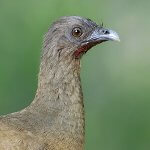
Help support ABC's conservation mission!
Although the Plain Chachalaca remains common throughout most of its range, it is increasingly threatened by habitat loss. It is still hunted as a game bird, although this apparently has little effect on overall populations. Pesticide use may threaten chachalacas that live near agricultural areas. The Plain Chachalaca can be found at 10 locations in Mexico and Central America that are part of ABC's bird reserve network.
ABC recently supported Guatemalan conservation partner FUNDAECO in acquiring more than 1,000 acres of rainforest habitat in the Cerro San Gil Watershed Protection Area, part of Guatemala's Conservation Coast BirdScape. This region protects habitat for the Plain Chachalaca and a number of migratory birds such as the Wood Thrush and Kentucky Warbler.
Get Involved
Many of the rarest bird species in the Western Hemisphere remain relatively unknown. You can learn more about these birds and the threats they face by signing up for ABC's Bird of the Week email series, which frequently highlights these fascinating birds.
American Bird Conservancy and our partners throughout Latin America and the Caribbean have created and expanded more than 100 bird reserves, which protect upward of 1.1 million acres of vital habitat. Together, we've planted more than 6.8 million trees, helping to restore degraded and damaged habitat. You can help us continue to protect endangered birds by making a gift today.






































